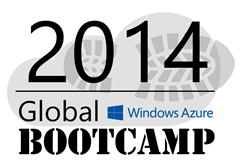Introduction
Last Saturday the worldwide Windows Azure Boot Camp was organized all around the world. As we’ve announced in our introduction to GWAB post, Codit sponsored 925 cores to Codit employees!
The event was organized on 2 locations in Belgium by AZUG –
- Genk hosted by Yves Goeleven, Kristof Rennen and Kris Van Der Mast from AZUG
- Kortrijk where Tom Kerkhove and Glenn Colpaert from Codit joined forces with AZUG.
Genk
This event was organized in the Microsoft Innovation center in Genk, this is located on the C-Mine site.
Before starting we were all treated with some “koffiekoeken” – for those who do not understand Flemish, the below pictures it pretty nicely:
With a full stomach and a full agenda ahead the event kicked off at 9 A.M. punctual.
It started with an introduction by Yves describing what the event was about (to provide some compute time for diabetic research).
The starter video was shown as well. The same video was actually shown all over the world, on all GWAB locations.
You can watch it here: https://www.youtube.com/watch?feature=player_embedded&v=gZrxDl03W-A
So let’s take a look what presentations were given in Genk…
Visual studio online – Kris Van Der Mast
After having some trouble finding the Innovation center, Kris kicked of his presentation with the question “who already used Visual Studio online” – Only a few people had already used it, so a great presentation to start the day.
Kris made a site from ground up, some features he used – keyboard shortcuts, drag and drop, online console, intellisense, unzip functionality, TFS and git integration.
I was impressed by the speed, besides it’s still in beta it did look already very mature. Of course the local Visual Studio & TFS will always be the bigger brother, but in my opinion Visual Studio Online has a lot of potential.
Internet of things by Yves Goeleven
First of all what do they mean with the hyped term “Internet of things”? Everyday devices equipped with sensors and connectivity to work together, or to make it simpler to make your fridge order more beer when you’re out or your doctor that can check your health status remotely when you’re wearing a wearable (did I already mention Hyped with the big H?).
Recently Cisco made some predictions of the revenue for the future and it looked good: right now there are more devices than people on the planet. By the year 2020 this should exceed 50 billion devices!
Yves showed us a setup with a Netduino where he attached a temperature sensor and a Bluetooth chip. Combined with his mobile phone he could activate the sensor over Bluetooth and start reading the temperature in the room. Additionally the temperature was visualized via an application on his laptop. Communication between the sensor and application was done over this phone and Azure.
This is another great showcase where Windows Azure can be helpful in real-life.
Customer cases
During the customer cases we had an overview of an application made by QFrame, where they explained their architecture that should be able to handle large amounts of data. They had chosen Azure for the easy scalability.
Xavier De Coster gave an overview of his project MyGet – www.myget.org, it a tool for friction-free dependency management. MyGet offers (instead of NuGet) the ability to create private feeds, assign privileges, create packages from your own sources, Git integration, symbol support, different feeds (QA, IT, PROD, …).
Yves showed his personal project MessageHandler – he surprised us with the quote “you’ve already seen the MessageHandler in action but you did not know it”. In his presentation of Internet of things the communication between his phone and his application was done by his MessageHandler.
Kristof surprised us by using the blackboard instead of a PowerPoint. With the “old-school” presentation, he showed us around the pitfalls of moving an existing project to the cloud.
Introduction of Windows Azure BizTalk Services by Nico Debeuckelaere
Nico gave us a brief introduction to the Windows Azure BizTalk services (WABS), which are a simple, powerful, and extensible cloud-based integration service that provides Business-to-Business (B2B) and Enterprise Application Integration (EAI) capabilities for delivering cloud and hybrid integration solutions. The service runs in a dedicated environment.
Deep dive architecture of Azure Storage by Yves Goeleven
Before he started his session, Yves gave us the choice between 2 sessions – an easy to understand presentation or his famous hardcore “666” session, in where you would come to a certain mental point where you would want to “kill yourself” or throw something at Yves.
As real Azure heroes we chose for the die hard “666” session.
Let this be a tip for you: if an Azure MVP warns you that he has prepared a die hard session. It probably is and you should not doubt it!
Infrastructure as a service by Kristof Rennen
Kristof closed the day with a session on Infrastructure as a service (IaaS), where he shared some of his personal experiences on creating our own IaaS in Windows Azure.
Some tips:
· You do not pay for a stopped server in Azure, only the data it consumes.
· You do not pay for bandwidth within the Azure datacenter.
· For a production server: only use instances with a full core not the XS version.
· If you want more disk size than the max 1 TB you can stripe multiple disks on your Azure server.
· A storage account cannot have more than 200 TB, if you want more you should create multiple storage accounts.
Kortrijk
The 2nd location was organized in cooperation with Microsoft Innovation Center as well, which is located on the Kulak site.
Hop on the Service Bus by Tom Kerkhove
Tom gave us an introduction how he started using Microsoft Azure service bus a few months ago for the first time. He briefly explained the different possibilities of service bus and architecture to be able to choose between service bus queues and storage queues.
Continuing with a short demo about the basic functionality of servicebus queues, we were even able to tackle more advanced techniques, like deadletter queues and duplicated message detection.
It is nice to hear about user experiences and to see pitfalls and how they can be tackled.
You can review his presentation here.
Kinecting in the cloud by Tom Kerkhove
As a current Microsoft Kinect MVP, Tom gave us a demo on how Kinect can be used together with Azure notification hubs. It was quite interesting to learn something more about another Microsoft product, the Kinect for Windows. Tom made a nice demo, which showed us a futuristic application for exhibitions.
His presentation can be found here.
Windows Azure, an open platform on your teams by Sam Vanhoutte
As a Microsoft Integration MVP and V-TSP, Sam built up a nice stack of experience. His session focused on his own experience and the different application building blocks in the cloud.
I was very surprised to see such a nice demo, which included the possibility to use REST calls to handle domotics at home. By using Azure VPN, service bus and domotics of TeleTask at home, he made it possible to open the curtains at home from anywhere using his rest API.
Customer cases by Nick Trogh
Nick works as a Microsoft Evangelist and showed us some nice customer cases implemented in Belgium. It is nice to see a changing landscape from in-house hardware to cloud or hybrid scenarios for existing companies, as well for start-ups who gain more benefits by using cloud technology.
Integrating the Cloud by Glenn Colpaert
After his Codit Integration Cloud customer case it was time for the real deal – Glenn his very first session in the community! He introduced the crowd to Codit Integration Cloud and the capabilities it has to offer. The most interesting part to me was how Codit Integration Cloud works under the hood and all the pieces form one nice product! After a demo Glenn wrapped up with the lessons we learned during architecting & development of the platform!
Windows Azure BizTalk Services by Glenn Colpaert
Glenn kicked off with the evolution of enterprise integration: from brokers and service bus towards Winodws Azure BizTalk Service.
Glenn gave a really good introduction to WABS for EAI & B2B scenarios. He ended up with connecting his (already famous) SAP-in-a-box with a WPF client by using Service Bus Relay, WABS & WABS Adapter service! If Glenn is doing this session again, don’t hesitate and attend!!
Small country, BIG compute!
Next to the sessions we also participated in the global charity lab where we deployed a cloud service that did research for diabetics.
We also deployed the global lab in 4 different regions around the globe on 925 cores that Codit donated!
The lab was a great success, the scientists are happy with the results and the stats are awesome!
- Top 10 Countries – Belgium ended up as #2 around the world with 192 days 0 hours 7 minutes (!!!) of processing time
- Top 10 Locations – Kortrijk was #1 (!) with 105 days 19 hours 44 minutes and Genk #9 with 86 days 4 hours 31 minutes
- Top 10 Companies – Codit came, rendered and conquered! We made it to the 7th best company with 50 days 20 hours 4 minutes of processing and total of 38.160 datasets processed!
You can find all the results here!
Thanks for reading,
Jonathan – Glenn – Sam – Tom
Subscribe to our RSS feed

